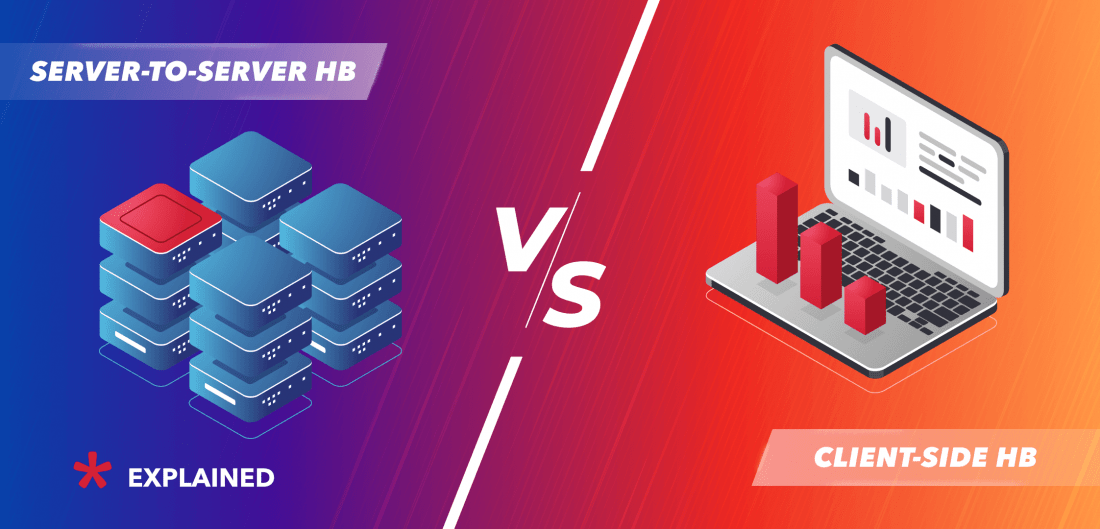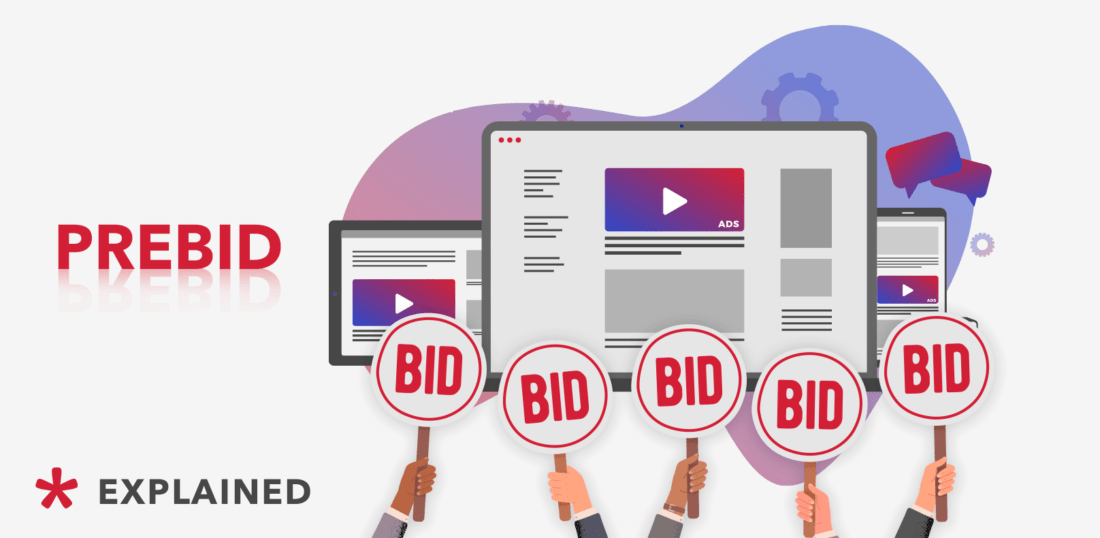
Client-Side vs. Server-to-Server Header Bidding: Your Action Plan
Header bidding was an industry earthquake. Suddenly you were able to sell those precious ad spots one buyer at a time. Instead, you could hold an auction in real time with ad partners fighting to reach your visitors. However, all header bidding platform options aren’t created equal. Get ahead of the game by mastering the core difference between client side vs. server side header bidding strategies.
Client-Side: Transparency, But with Limitations
Imagine client-side header bidding as a personal auction house in your visitor’s web browser. Special JavaScript code on your pages acts as the auctioneer, calling for bids every time a page loads. It pings your chosen ad partners, collects their offers, and then the highest bidder wins, their ad loading instantly.
Now, let’s examine the pros and cons of client-side header bidding:
Pros
- Easy to understand and use: You see exactly what advertisers are willing to pay. That data fuels smart decisions when setting your price floors.
- Power in your hands: You have refined control over deciding which ad partners get invited. Don’t like someone’s style? You can disable bidders or enable new ones.
- Less complicated tech: Compared to other methods, getting client-side header bidding up and running is fairly straightforward.
- Precise bidding: Using browser-based cookies for precise identity resolution empowers publishers to provide more accurate information about users, gaining more bids and overall more active auctions.
- The power of choice: Client-side bidding with Prebid.js offers unparalleled options with its extensive library of supported bidders, giving the flexibility to create the ideal setup.
Cons
- Slow as a turtle: All that auction action inside a browser can drag down page load speeds, especially if synchronous ad tags are used. This translates into frustrated visitors and a negative impact on your site’s overall reputation.
- The Browser Limit: Browsers weren’t made for huge data loads. That means you’re stuck with a handful of buyers instead of having a bidding frenzy, introducing a lot of latency. Carefully consider the number and quality of bidders you integrate into the website.
Server-to-Server (S2S): Speed and Scale, but Reduced Visibility
S2S is moving your auction from a browser to your own server. No more dragging down page speeds – with S2S, it’s all fast and has no real impact on user experience. Powerful server eliminates page speed concerns and allows for a significantly larger pool of buyers, potentially driving up prices.
But like everything, there are trade-offs:
Pros
- Enhanced performance: S2S eliminates page load delays associated with client-side bidding.
- Increased competition: More demand platforms in the mix typically translate to higher revenue potential.
- Improved Traffic Management: More servers, more opportunities, and a streamlined bidding process, preventing slowdowns in ad rendering and smooth ad experience.
Cons
- Blind Auction: The flip side of that fierce competition is you won’t see individual bids. Working with reputable S2S solution providers like Amazon UAM or Google Open Bidding is important. Otherwise, you’re at the mercy of the vendor. They could manipulate the auction, distorting it in their favor and costing you revenue. That loss of transparency is a dealbreaker for some.
- Technical complexity: S2S isn’t for the faint of heart. You’ll need the right tech team or external support to handle the setup and provide additional funds (servers are not cheap) to keep this powerful machine running smoothly.
- Targeting limitations: Server-to-server means some of the usual user data gets lost in translation. This makes targeted advertising trickier.
- Limited partners, limited options: Open-source Prebid Server has fewer supported companies, and tech giants like Amazon and Google are selective. This means some great companies may be left out.
Decision Time: What’s Best For You?
Here’s your quick action plan for choosing the right header bidding path:
- New to the game and prioritize transparency? Client-side might be a nice entry point. Get up to speed and see the results of the auctions.
- Is site speed a top priority? Do you have technical resources and a team available? S2S could be the key to significant revenue growth.
The good part is you can get the best of both worlds! Strategically combining client-side and server-to-server header bidding for a hybrid setup maximizes competition, leading to higher fill rates and increased revenue:
- Direct advertiser connections and greater data exchange with priority partners via client-side header bidding;
- Streamlined bidding process for speed and improved user experience with S2S.
The easiest way to start is the client-side header bidding platform. That’s where Admixer.HB+ might be your new secret weapon:
- Broad Buyer Network: We connect you with top-quality ad partners without drowning your visitor’s browser in extra requests. The competition gets real!
- Simplified Management: Forget dealing with code on every page. Manage partners, monitor pricing, and analyze the data on a slick user interface.
- Data Driven: Admixer.HB+ pulls back the curtain just enough. See trends, and make smart pricing changes – without giving away the shop.
But S2S sounds awesome, too! And we encourage you to create a combination of Admixer.HB+ and an S2S solution you are comfortable with. Moreover, Admixer is Google’s trusted MCM partner (Multiple Customer Management program by Google), offering publishers access to Google Ad Manager 360 as a part of Admixer.HB+ monetization stack, allowing Admixer-managed Open Bidding partners to compete side-by-side with Prebid connections. This integration streamlines your hybrid header bidding solution, offering the most advanced, flexible, and profitable setup.
Key Takeaways
- Header bidding is here to stay. The sooner you get a strategy in place, the better!
- Client-side is simpler to start, but speed limits and potential performance issues could hamper your long-term earning potential.
- S2S is the champion when it comes to scalability and speed but requires technical resources and comes with some loss of auction transparency.
- Combining client-side and server-to-server header bidding may be the most flexible way to boost monetization revenue.
- Platforms like Admixer.HB+ can level up your client-side game while also seamlessly integrating with S2S for a powerful hybrid solution.





